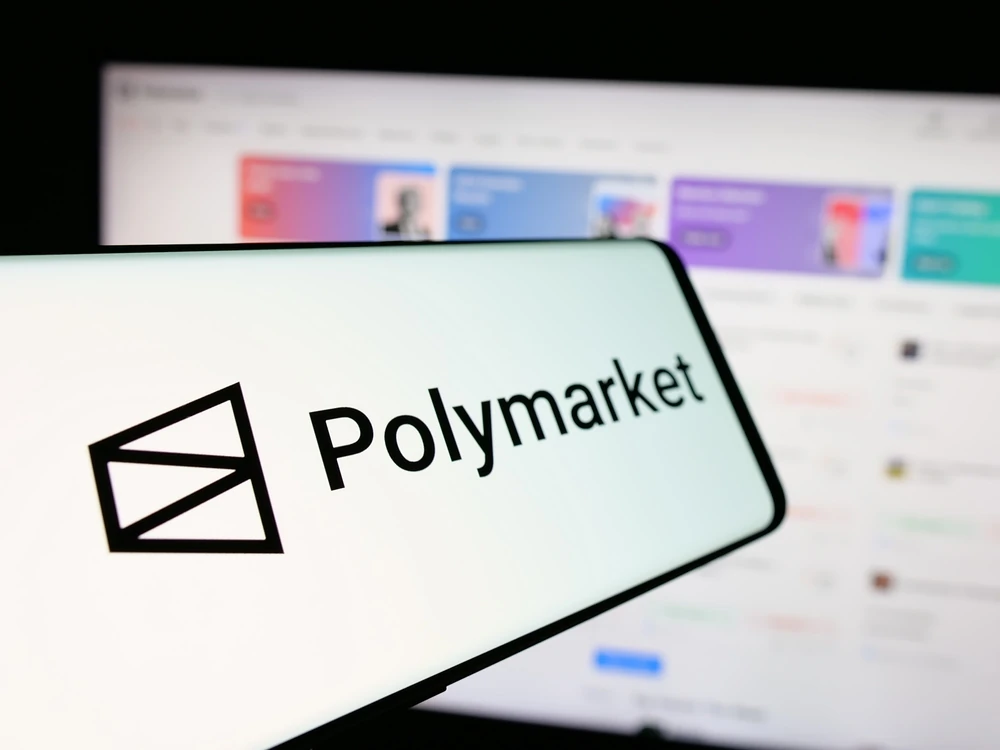Polymarket will re-enter the U.S. market with fees, the first of its kind for the prediction market company. Traders, however, have little reason to complain.
At just 1 basis point (0.01%) for takers only, the rate undercuts competitors like Kalshi and traditional sportsbooks by orders of magnitude, positioning Polymarket as one of the most cost-efficient options for traders.
Polymarket trading fees, explained
The prediction market platform, recently seeking funding at valuation up to $15 billion, has detailed its U.S. exchange fees on its U.S. website. The structure is refreshingly simple: fees apply only to aggressive orders that immediately match against resting orders on the orderbook (known as “taker orders”).
Taker Fee Rate: 1 basis point (0.01%) on the Total Contract Premium
The calculation is straightforward, too. Multiply the number of contracts by the price to get the premium, then take 0.01% of that figure.
Example: Purchase 1,000 contracts at $0.65 per contract
- Total Contract Premium: 1,000 × $0.65 = $650.00
- Taker Fee: $650.00 × 0.0001 = $0.065
How Polymarket stacks up against rival prediction market exchanges
Polymarket’s new fees are startlingly low and will be an instant way to attract users who are at all price sensitive. Opening a $1,000 position, at 50¢ (so purchasing 2,000 contracts), a Polymarket taker would pay only about $0.10 to enter.
That same position works out to $35 on Kalshi using their general-market formula that is price sensitive and peaks around mid-prices.
Meanwhile, Robinhood event contracts include a $0.01 commission on top of a $0.01 exchange fee, making it a hefty $40 to enter. Unlike Kalshi’s, fees on Robinhood do not fluctuate based on the price of your contract, making them particularly punitive for longshot positions. For example, say you are trading a golf event and want a 1¢ golfer — you still end up paying $0.03 per contract, quickly slashing your implied odds from 99-to-1 to almost 32-to-1. That is substantially more predatory than a sportsbook regardless of what Robinhood CEO Vlad Tenev may say.
Then there’s PredictIt, the prediction market O.G. that has largely fallen under the radar as quickly as Kalshi and Polymarket have emerged, charging 10% of profit at close and a 5% withdrawal fee.
Finally, compare Polymarket to a sportsbook’s traditional -110/-110 pricing, which bakes in a ~4.76% hold, coming out to $47.50 in expected costs on $1000 wagered. Polymarket remains a massive bargain.
It’s the economy fees, stupid
Prediction markets have constantly pitched themselves as superior peer-to-peer alternatives to sportsbooks, emphasizing that traders aren’t betting against the house. To the extent this is true largely depends on a platform’s fees. The distinction only becomes meaningful when fees are low enough to deliver real value.
If prediction market fees rival the hold embedded in sportsbook odds, then the “peer-to-peer” advantage evaporates for casuals. In fact, similar fees can make exchanges even harder to beat than sportsbooks for anyone who isn’t a more sophisticated market maker.
This is where Polymarket’s U.S. arrival matters. Setting aside the rivalry between prediction markets and sportsbooks and the legal complexities surrounding sports event contracts, one question matters most: Which product leaves sports bettors better off after costs?
With a 0.01% fee structure, Polymarket will make trading/betting sports more economical and sustainable long term for much of the betting public.
Two things that can both be true at the same time:
1. Exchanges/PMs are much harder to beat long-term than sportsbooks. (As discussed by @SquirrelSigma below.)
2. Exchanges/PMs offer better pricing and recreation bettors lose less than at sportsbooks.How?
1. To beat one… https://t.co/QXUKjrPsQa
— Harry Crane (@HarryDCrane) October 23, 2025
When will Polymarket U.S. launch?
With the acquisition of QCEX and its clearinghouse earlier this summer, Polymarket announced its plans to re-enter the U.S. market with a centralized, off-chain exchange regulated by the Commodity Futures Exchange Commission (CFTC).
Many expected their coming home party to take place in early weeks of the NFL season, if not Week 1. Now entering Week 10, we still await Polymarket’s U.S launch, a delay that may be a small consequence of the ongoing U.S. government shutdown.
Polymarket’s own forecast gives roughly a 45% chance of the shutdown ending by November 16 — potentially paving way for a launch timed perfectly for the Thanksgiving slate.
If Polymarket U.S. launches before the turkey comes out of the oven, their low fees are certainly something traders can be thankful for.
Reactions from traders
Probably nothing.
That’s how much you’ll pay for each trade on Polymarket US with their record-low 0.01% Taker Fees.
I compared fees on the 4 largest prediction markets.
This is approximately how much you will spend on each of them if you decide to enter into a $1,000 trade.… https://t.co/k7UcaWDN2J pic.twitter.com/zlcykFPLiC
— cryptof4ck (@cryptof4ck) November 3, 2025
Fees at 0.01% for polymarket is a lot lower than I expected, and also comparable to even the perp dexes
not sure how long this will last but it will definitely help them in taking back the shares in the US market pic.twitter.com/lJ7kxqTTvC
— cs_defier (@cs_defier) November 3, 2025
Not surprising to see fees being added to the Polymarket US exchange
At 0.01%, still just a fraction of their competitors rate
Rumor is they are launching at the end of November
Excited to try it out! https://t.co/5KIhe29YIR
— Tyrael (@0xTyrael) November 3, 2025

























